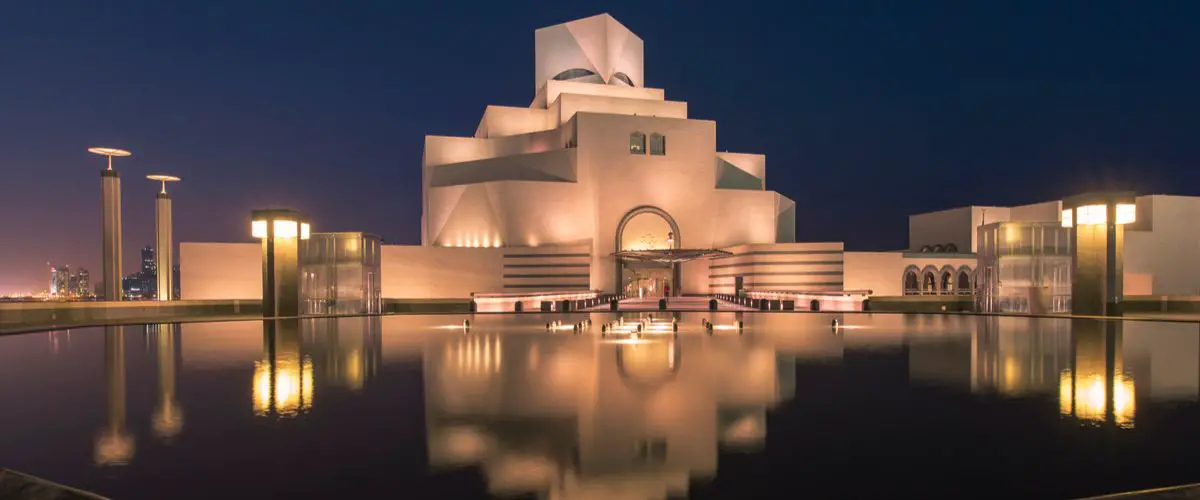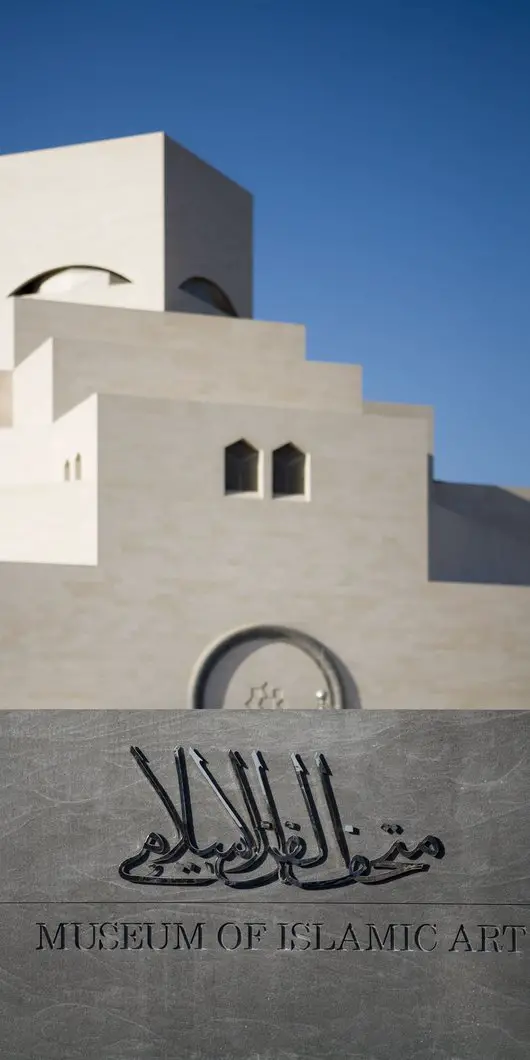
The Museum of Islamic Art Qatar
Nestled along the picturesque Corniche waterfront of Doha, Qatar, the Museum of Islamic Art (MIA) stands as a beacon of cultural heritage and artistic magnificence. Designed by the renowned architect I.M. Pei, this architectural marvel seamlessly blends Islamic aesthetics with modern sensibilities .Creating a space that not only houses priceless artifacts but also inspires awe and reverence for the rich artistic traditions of the Islamic world.
A Testament to Islamic Artistry
The Museum of Islamic Art is not just a repository of historical artifacts . It is a testament to the ingenuity, creativity, and artistic prowess of Islamic civilizations spanning over 1,400 years. From intricate calligraphy to mesmerizing geometric patterns, every exhibit within the museum tells a story of cultural exchange, innovation . And profound spiritual and artistic expression.
Architectural Grandeur
Designed to evoke a sense of timeless elegance, the Museum of Islamic Art’s architecture is as captivating as the treasures it holds. I.M. Pei’s vision for the museum reflects a harmonious blend of Islamic architectural elements with contemporary design principles. The building’s geometric forms, expansive domes . And serene courtyards create an atmosphere of tranquility and contemplation, inviting visitors to embark on a journey through the artistic legacy of the Islamic world.
Exploring the Collections
Upon entering the museum, visitors are greeted by a breathtaking collection of artifacts that span across three continents, covering diverse periods and regions of Islamic civilization. The exhibits are meticulously curated to showcase the evolution of Islamic art, from the early Islamic period to the Ottoman Empire and beyond.
Islamic Calligraphy and Manuscripts:
One of the most revered art forms in Islamic culture, calligraphy adorns manuscripts, ceramics, and architectural elements throughout the museum. The intricate scripts not only convey religious texts but also serve as a medium for artistic expression and spiritual devotion.
Textiles and Carpets:
The museum’s collection of textiles and carpets reflects the craftsmanship and aesthetic sophistication of Islamic artisans. Rich in color and intricate in design, these textiles offer a glimpse into the opulence and refinement of Islamic courtly life.
Metalwork and Ceramics:
From delicately embellished metalwork to exquisitely glazed ceramics, the museum’s collection showcases the technical mastery and artistic innovation of Islamic craftsmen. Each piece speaks to the cultural diversity and technological advancements that characterized Islamic societies across the centuries.
Woodwork and Glassware:
The museum’s galleries also feature rare examples of Islamic woodwork and glassware . Highlighting the ingenuity and creativity of artisans who transformed humble materials into objects of extraordinary beauty and utility.
Cultural Programs and Educational Initiatives
Beyond its role as a repository of artifacts, the Museum of Islamic Art is committed to fostering cultural dialogue and promoting understanding of Islamic art and heritage. The museum regularly hosts educational programs, workshops, and exhibitions that engage visitors of all ages and backgrounds. These initiatives aim to illuminate the significance of Islamic art in global cultural history and inspire future generations of artists, scholars, and cultural enthusiasts.
Visitor Experience and Amenities
The Museum of Islamic Art offers a world-class visitor experience, with amenities designed to enhance comfort and convenience. The museum’s gift shop features a curated selection of books, replicas . And artisanal crafts inspired by Islamic art, providing visitors with the opportunity to take home a piece of their museum experience.
Café and Dining:
The museum’s café offers a delightful culinary experience amidst stunning views of the Doha skyline and the tranquil waters of the Corniche. Visitors can savor a selection of Middle Eastern and international dishes, prepared with the finest ingredients and served with warm hospitality.
Accessibility and Facilities:
The Museum of Islamic Art is fully accessible to visitors with disabilities, with ramps, elevators, and designated parking spaces available. Guided tours in multiple languages, as well as audio guides . Ensure that visitors can explore the museum at their own pace while gaining deeper insights into its collections and history.
Sustainability and Conservation Efforts
In addition to its commitment to cultural preservation and education, the Museum of Islamic Art is dedicated to sustainable practices and environmental stewardship. The museum strives to minimize its ecological footprint through energy-efficient building design . Waste reduction initiatives, and responsible resource management. By integrating sustainability into its operations, the museum exemplifies a commitment to preserving not only cultural heritage but also the natural environment for future generations.
Conclusion
The Museum of Islamic Art in Doha, Qatar, is more than a cultural institution; it is a testament to the enduring legacy of Islamic art and civilization. Through its remarkable architecture, unparalleled collections, and commitment to cultural exchange and education . The museum invites visitors from around the world to explore, engage, and be inspired by the beauty and diversity of Islamic artistic traditions. Whether you are a scholar, an art enthusiast, or a curious traveler . A visit to the Museum of Islamic Art promises an enriching experience that celebrates the timeless allure and profound significance of Islamic artistry.
